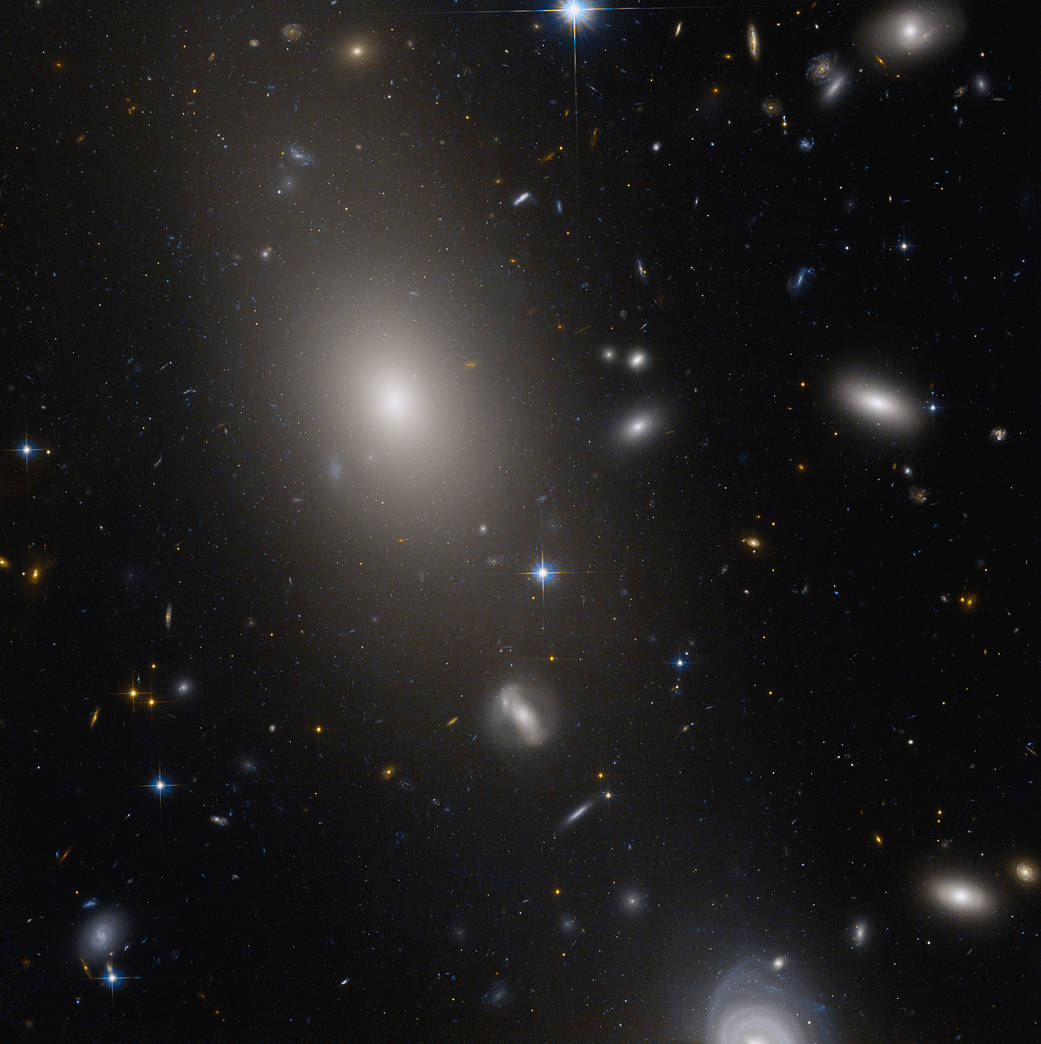This new NASA Hubble Space Telescope image spotlights the giant elliptical galaxy, UGC 10143, at the heart of galaxy cluster, Abell 2147, about 486 million light-years away in the head of the serpent, the constellation Serpens. UGC 10143 is the biggest and brightest member of Abell 2147, which itself may be part of the much larger Hercules Supercluster of galaxies. UGC 10143’s bright center, dim extended halo, and lack of spiral arms and star-forming dust lanes distinguish it as an elliptical galaxy. Ellipticals are often near the center of galaxy clusters, suggesting they may form when galaxies merge.
This image of UGC 10143 is part of a Hubble survey of globular star clusters associated with the brightest galaxies in galaxy clusters. Globular star clusters help astronomers trace the origin and evolution of their galactic neighbors. The Hubble survey looked at the distribution, brightness, and metal content of more than 35,000 globular star clusters.
The image uses data from Hubble’s Advanced Camera for Surveys. Any gaps were filled by Hubble’s Wide Field and Planetary Camera 2 and the Pan-STARRS collaboration. The color blue represents visible blue light, and reddish-orange represents near infrared light.
Image credit: NASA, ESA, and W. Harris (McMaster University); Image processing: G. Kober (NASA Goddard/Catholic University of America)
这张NASA哈勃太空望远镜拍摄的新图像聚焦了巨大的椭圆星系UGC 10143,它位于星系团阿贝尔2147的中心,大约4.86亿光年远,位于巨蛇座的头部。UGC 10143是阿贝尔2147中最大、最明亮的成员,它本身可能是更大的大力神星系团的一部分。UGC 10143明亮的中心、暗淡的延伸光晕,以及缺乏旋臂和恒星形成尘埃带,使其成为一个椭圆星系。椭圆星系经常靠近星系团的中心,这表明它们可能在星系合并时形成。
这张UGC 10143的图片是哈勃对与星系团中最亮星系有关的球状星团进行调查的一部分。球状星团帮助天文学家追踪其星系邻居的起源和演化。哈勃调查研究了35,000多个球状星团的分布、亮度和金属含量。
该图像使用哈勃高级巡天相机的数据进行测量。所有空白都由哈勃的广角行星相机2号和泛星合作项目填补。蓝色代表可见蓝光,红橙色代表近红外光。
影像来源:NASA, ESA, and W. Harris (McMaster University); 影像处理:G. Kober (NASA Goddard/Catholic University of America)







